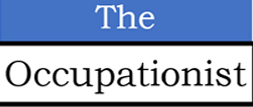From the rigid and long work hours amounting to slavery with a horrific workplace during the Industrial Revolution to somewhat lesser rigid work hours before the Covid pandemic, office workers are now having a great time with both flexible work hours as well as a flexible workplace, like a home.
Flexibility is the new buzzword and employers are adopting to the new rules set by the employees, especially the Millennials and the GenZ.
It is unlikely that millions of office workers, if not all, will ever work with the historic rigidity imposed on them. Flexibility is the new buzzword and employers are adopting to the new rules set by the employees, especially the Millennials and the GenZ.
However hard the employers try to get the workers back to offices, most workers have refused the offer and have dominated the negotiations, perhaps for the first time in history. Never in the history of ‘working for a living’ life, the worker has been so stubborn and yet successful at being a flexible worker.
Flexibility at workplace is the new perk; it is a new wellness initiative!
Flexibility doesn’t mean just working from home but also means flexibility even at the workplace, a mistake that many corporate leaders do. The returns of flexibility at workplace are indeed so many and so useful to both, the employers and the employees, that ignoring the demands of flexibility by workers can be detrimental to the corporations. In fact, flexibility at workplace is the new perk; a new wellness initiative!
According to a study by ManpowerGroup Solutions, around 40 percent of candidates globally look for workplace flexibility as among their top three options.
Flexibility doesn’t mean just working from home but flexibility even at workplace, a mistake that many corporate leaders do.
Flexible work attracts not only the best talent but also makes the employees more productive. In a Gartner 2021 Digital Worker Experience Survey, 43 percent said that flexible working hours allowed them achieve better productivity while 30 percent said that reduced or nil commuting time helped them to be more productive.
In an era of mental health concerns, flexibility of work is one of the many ways by which sanity at busy workplace is attainable.
In another survey by Airtasker, employees working from home worked 1.4 days more every month or 16.8 days every year compared to office workers. Distractions too were lesser in those employees who worked from home.
According to Lindsay Mustain, ex-Amazon recruiter and author of 7 Critical Resume Mistakes to Avoid, “Employees have been statistically proven to be more efficient when provided the opportunity to independently work when, how and as much as they like. Flexible options increase both productivity and the time an employee spends working. Remote workers put in more hours than their office counterparts and are even more effective than in traditional office settings with constant distractions and interruptions.”
Flexible work leads to better work-life balance which in turn improves physical and mental health as they have better control over their time.
Flexible work schedules also reduce attrition. It is an important perk employees look for. A survey by Flexjobs found that 80 percent of employees would be more loyal to their employer if they offered flexibility at work. When an employee is engaged, they spend less time finding new opportunities.
Employee engagement at work is extremely important and flexibility at work drives employee engagement, according to Gallup study. Employees who are engaged are focused and are healthier and their performance improves. A set of engaged employees leads to 40 percent lesser quality defects, 41 percent reduction in absenteeism and a 21 percent increase in profitability.
In an era of mental health concerns, flexibility of work is one of the many ways by which sanity at busy workplace is attainable.
Flexible work leads to better work-life balance which in turn improves physical and mental health as they have better control over their time.
Pitching for flexibility at work where possible is something that an Occupational Health Physician (OHP) does to promote the idea to the senior management in case they aren’t aware. Awareness is important as it opens new gateways to engage employees to improve productivity without compromising on work-life balance and the role of OHP in advising the leadership is of utmost importance. Flexibility at workplace can be seen as a wellness initiative too!
In an ever-expanding role of OHP, sounding the senior management of anything to do with employee concerns should be a priority. In an era of mental health concerns, flexibility of work is one of the many ways by which sanity at a busy workplace is attainable.
The management should understand that the role of OHP is expanding and it should not be seen as overstepping the assigned role as anything that improves worker health and productivity falls under the domain of Occupational Health. In fact, inputs by OHP are often overlooked and underestimated. The support by the senior management to OHP will only lead to improvements in productivity indirectly and employee health directly.
To know more, contact
____________________________________________________________________________________________
Dr Ajay Sati is an Occupational Health physician who prefers to describe himself as an Occupationist, to denote, ‘an expert in diseases and other concerns of occupations.’ Dr Sati has managed health and wellness programs in industries he worked, like the atomic energy, and energy (oil & gas) in India and overseas. An experienced virtual consultation expert he was involved in many greenfield and brownfield projects providing inputs from health point of view.



